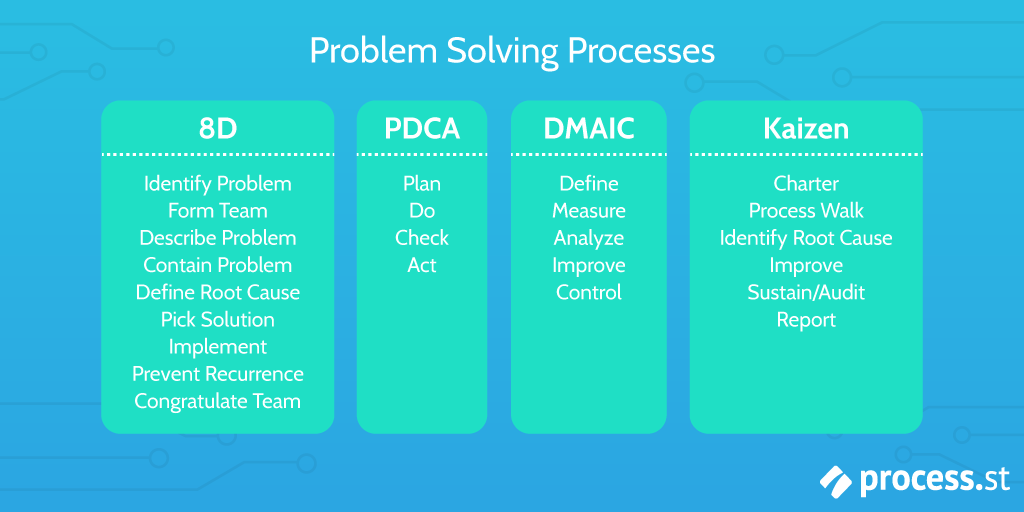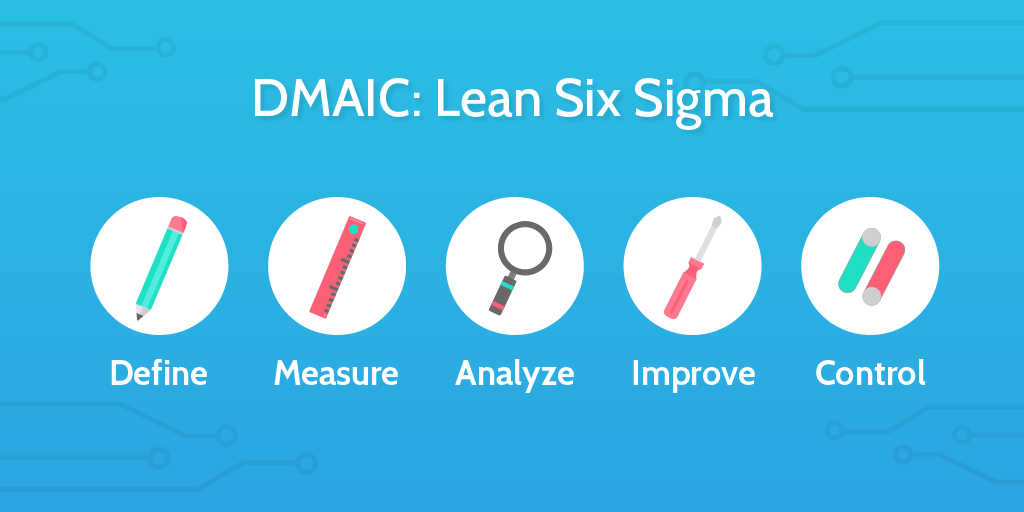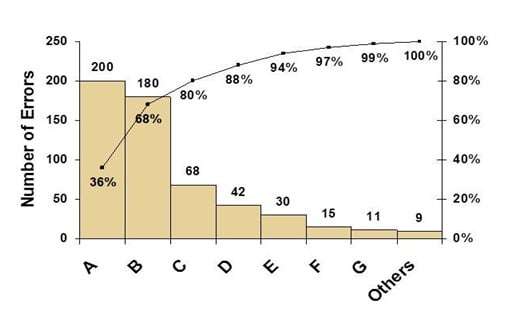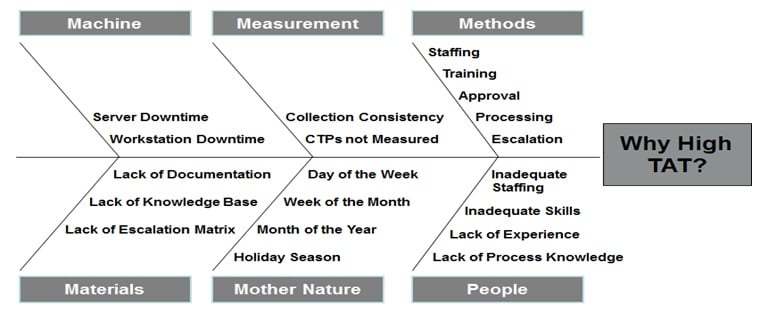
Hospitals have developed something of a reputation for being rife with bad processes. When processes aren’t adequate, the result is an abundance of “workarounds”.
For example, when equipment or supplies are missing, a nurse might waste time running around searching for what is needed, and once the item is found, return to their previous duties.
One study indicates that nurses spend 33 minutes of a 7.5-hour shift completing workarounds that are not part of their job description.
This may well “put out the fire” so-to-speak, but really it is just a hastily applied band-aid that does nothing to treat the root cause of the problem.
More time is wasted and more problems will arise in the future because nothing has been done to prevent the initial problem from happening again.
Individual nurses are not at fault here; workplace culture often values expertise in the form of those who “get the job done”, which tends to pull against the notion of spending time building good processes (time in which the job is perhaps not “getting done”).
So how to approach the problem of problem solving?
In a lean context, problem solving can be distilled into two simple questions:
- What is the problem and how did it happen?
- How can we make sure that it doesn’t happen again?
The 8D, or eight disciplines methodology, is a problem solving process – most likely one of the most widely used problem solving processes out there. It is used by many different countries, in many different industries, and many different organizations.
8D is designed to help you put out those fires, and make sure they don’t happen again.
In this article, I’ll introduce you to the 8D problem solving methodology and provide you with an outline of the basic process that you can hopefully apply in your own business, plus how you can enhance 8D with other tools and methodologies like Six Sigma, FMEA, and Process Street.
Here’s what I hope you’ll take away after reading:
- An understanding of the basics of 8D
- Advantages of using 8D
- The purpose and objectives of each phase of the 8D process
- An understanding of how to use 8D for problem solving
- How 8D works with other problem solving tools
- How you can use Process Street to maximize the potential of the 8D framework
Let’s begin with the origins of 8D – what is it, and where did it come from?
What is 8D?
8D (sometimes Global 8D or G8D) stands for eight disciplines, and is a problem solving methodology. It’s basically a process for understanding and preventing problems.
Much like how risk management seeks to take a proactive, preventative stance, 8D aims to gain insight into the root causes of why the problems happen, so they won’t happen again.
The 8D process involves eight (sometimes nine) steps to solve difficult, recurring problems. It’s a transparent, team-based approach that will help you solve more problems in your business.
8D origins: Where did it come from?

Despite the popular story that 8D originated at Ford, it was in fact developed in 1974 by the US Department of Defence, ultimately taking the form of the military standard 1520 Corrective Action and Disposition System for Nonconforming Material.
Ford took this military standard, which was essentially a process for quality management, and expanded on it to include more robust problem solving methods.
In 1987, Ford Motor Company published their manual, Team Oriented Problem Solving (TOPS), which included their first iteration of the 8D methodology.
Initially termed Global 8D (or G8D) standard, it is currently used by Ford and many other companies in the automotive supply chain.
8D, PDSA, & other problem solving processes

The disciplines of 8D follow the same logic as the Deming Cycle (also known as PDSA, and sometimes PDCA).
PDSA stands for Plan, Do, Study, Act (or Check, in the case of PDCA).
The similarity lies in the fact that both PDSA and 8D are designed to be used to improve processes. They’re both examples of cycles of continuous improvement.
Whereas 8D may be painted as a more generic problem-solving framework, structurally speaking both 8D and PDSA share a lot in common.
The simple idea of beginning with a clear objective, or desired output, and then testing, analyzing, and iteratively tweaking in a continuous cycle is the basis for both methodologies.
There are, of course, differences. We’ll cover the different applications of both 8D and PDSA in this article.
8D advantages
One of the main strengths of 8D is its focus on teamwork. 8D philosophy encourages the idea that teams, as a whole, are more powerful than the sum of the individual qualities of each team member.
It’s also an empirical methodology; that is to say that it is a fact-based problem solving process.
A branch of continuous improvement, proper use of 8D will help you coordinate your entire team for effective problem solving and improved implementation of just about all of the processes used in your business.
The 8 disciplines for problem solving
As you may have noticed, we’re starting with zero, which makes nine total disciplines. This “zero” stage was developed as an initial planning step.
D0: Plan adequately
Make comprehensive plans for solving the problem including any prerequisites you might determine.
Be sure to include emergency response actions.
D1: Establish your team
Establish your core team with relevant product or process knowledge. This team will provide you with the perspective and ideas needed for the problem solving process.
The team should consist of about five people, from various cross-functional departments. All individuals should have relevant process knowledge.
A varied group will offer you a variety of different perspectives from which to observe the problem.
It is advisable to establish team structure, roles, and objectives as far ahead in advance as possible so that corrective action can begin as quickly and effectively as possible.
D2: Describe the problem
Have your team gather information and data related to the problem or symptom. Using clear, quantifiable terms, unpack the problem by asking:
- Who?
- What?
- Where?
- When?
- Why?
- How?
- How many?
D3: Contain the problem (temporary damage control)
Depending on the circumstances, you may need to mobilize some kind of temporary fix, or “firefighting”.
The focus of this stage should be on preventing the problem from getting worse, until a more permanent solution can be identified and implemented.
D4: Identify, describe, and verify root causes
In preparation for permanent corrective action, you must identify, describe, and verify all possible causes that could contribute to the problem happening.
You can use various techniques for this, including a Failure Modes and Effects Analysis, or Ishikawa (fishbone) diagram.
It’s important that the root causes are systematically identified, described in detail, and promptly verified (or proved). How each cause is verified will depend on the data type and the nature of the problem.
Take a look at the section towards the end of this article for some more problem solving tools to help you decide the right approach.
D5: Identify corrective actions
You must verify that the corrective action you identified will in fact solve the problem and prevent it from happening again in the future (or whatever is your desired threshold of recurrence).
The best way to do this is to collect as much data as possible and by performing smaller-scale “pilot” tests to get an idea of the corrective action’s impact.
You can’t begin to identify the optimal corrective action until you have identified the root cause(s) of the problem.
D6: Implement and validate corrective actions
Carry out the corrective actions, and monitor short and long term effects. During this stage, you should assess and validate the corrective actions with empirical evidence.
Discuss and review results with your team.
D7: Take preventative measures (to avoid the problem happening again)
Here is where you make any necessary changes to your processes, standard operating procedures, policies, and anything else to make sure the problem does not happen again.
It may not be possible to completely eliminate any chance of the problem recurring; in that case, efforts should focus on minimizing possibility of recurrence as much as possible.
D8: Congratulate your team
It’s important to recognize the joint contribution of each and every one of the individuals that were involved in the process.
Team members should feel valued and rewarded for their efforts; this is crucial and perhaps the most important step – after all, without the team, the problem would not have been fixed.
Providing positive feedback and expressing appreciation helps to keep motivation high, which in turn improves the sense of process ownership and simply increases the likelihood your team will actually want to improve internal processes in the future.
How to use 8D for problem solving
The 8D method above outlines a proven strategy for identifying and dealing with problems. It’s an effective problem solving and problem prevention process.
In addition to avoiding long-term damage from recurring problems, 8D also helps to mitigate customer impact as much as possible.
More than just a problem-solving methodology, 8D sits alongside Six Sigma and other lean frameworks and can easily be integrated with them to minimize training and maximize efficacy.
8D is definitely a powerful framework on its own, but it really shines when combined with other synergistic concepts of lean and continuous improvement.
More problem solving tools that synergize well with 8D
8D has become a leading framework for process improvement, and in many ways it is more prescriptive and robust than other more simplistic Six Sigma approaches.
However, there are many Six Sigma methodologies, and even more frameworks for problem solving and process improvement.
The following improvement tools are often used within or alongside the 8D methodology.
DMAIC: Lean Six Sigma

DMAIC stands for:
- Define
- Measure
- Analyze
- Improve
- Control
The DMAIC process is a data-driven cycle of process improvement designed for businesses to help identify flaws or inefficiencies in processes.
Simply put, the goal with DMAIC is to improve and optimize existing processes.
Interestingly, the development of the DMAIC framework is credited to Motorola, whose work built upon the systems initially developed by Toyota.
In terms of working alongside 8D, you could use DMAIC to identify root causes as in D4; you could also implement the same techniques to better understand prospects for corrective actions as in D5, and D6.
We have a whole article on the DMAIC process, if you’re interested.
SWOT analysis

Strengths, Weaknesses, Opportunities, and Threats. You can use a SWOT analysis to gain insight into your organization as a whole, or on individual processes.
The main synergy with 8D is in the identification of opportunities, threats, and weaknesses.
These can represent opportunities for process improvements, weaknesses in your process that could produce problems further down the line, and threats, both internal and external, that may be out of your direct control but that could cause problems for you.
Here’s a SWOT analysis checklist you can use to structure your own analysis:
FMEA: Failure Mode and Effects Analysis

FMEA (Failure Mode and Effects Analysis) is a way of understanding the potential for problems and making preemptive preparations in order to avoid them. It is a method of risk management.
It is a type of preventative risk management process, and so works well in the context of identifying causes of problems so you can better deal with them.
FMEA and 8D work well together because:
- 8D can make use of information gathered during an FMEA process, like brainstorming sessions, to identify potential problems and their root causes.
- You can reuse possible cause information gathered during an FMEA process to feed into different representational diagrams like the Ishikawa (fishbone) diagram, which will help in the 8D process.
- 8D brainstorming data is useful for new process design. This allows the FMEA to take actual process failures into account, which produces more effective results.
- FMEA completed in the past can be used as databases of potential root causes of problems to inform 8D process development.
Here’s a free FMEA template for you to get started ASAP:
The Pareto Chart
The Pareto Chart helps us understand the impact of different variations of input on our output.
In relation to 8D, Pareto Charts can help us prioritize which root cause to target, based on which will have the greatest impact on improvement (where improvement is the desired output of the 8D process).
Here’s the Six Sigma Institute’s example Pareto Chart:

5 Whys
Here we have a simple deductive reasoning technique that asks “why?” five times to dig into the root cause of a problem.
The logic here is that by asking the same question five times, you work progressively “deeper” into the complexity of the problem from a single point of focus.
Ideally, by the fifth question you should have something that has a high likelihood of being a root cause.
This example from Wikipedia does a great job of conveying how the process works:
- The vehicle will not start. (the problem)
- Why? – The battery is dead. (First why)
- Why? – The alternator is not functioning. (Second why)
- Why? – The alternator belt has broken. (Third why)
- Why? – The alternator belt was well beyond its useful service life and not replaced. (Fourth why)
- Why? – The vehicle was not maintained according to the recommended service schedule. (Fifth why, a root cause)
Ishikawa diagrams (fishbone diagrams)
Sometimes called “cause-and-effect diagrams”, they are as such used to visualize the cause and effect of problems.
The approach takes six different categories and places information about the problem into different categories to help you understand what factors could be contributing to the problem.
One advantage over the 5 Whys approach is the way this method forces a more holistic perspective, as opposed to the potentially narrow vantage point offered by zooming in on a single aspect or question.
According to the Six Sigma Institute, the 6 key variables pertaining to root causes of problems are:
- Machine: Root causes related to tools used to execute the process.
- Material: Root causes related to information and forms needed to execute the process.
- Nature: Root causes related to our work environment, market conditions, and regulatory issues.
- Measure: Root causes related to the process measurement.
- Method: Root causes related to procedures, hand-offs, input-output issues.
- People: Root causes related people and organizations.
There’s also this useful illustration of a company using a fishbone diagram to better understand what factors contribute to a company’s high turn around time.

Gap analysis

A gap analysis is concerned with three key elements:
- The current situation, or “performance”
- The ideal situation, or “potential”
- What needs to be done in order to get from performance to potential, or “bridging the gap”
The “gap” is what separates your current situation from your ideal situation.
Businesses that perform a gap analysis can improve their efficiency and better understand how to improve processes and products.
They can help to better optimize how time, money, and human resources are spent in business.
There’s a lot that goes into a gap analysis, and quite a few different ways to approach it. Check out our article for a deeper dive into the gap analysis process.
Superpowered checklists
Checklists can be a great way to simplify a complex process into a series of smaller, easy-to-manage tasks. They’re one of the best ways to start using processes in your business.
By using checklists, you can reduce the amount of error in your workflow, while saving time and money by eliminating confusion and uncertainty.
What’s more, if you’re using Process Street, you have access to advanced features like conditional logic, rich form fields and streamlined template editing.
How to use Process Street for 8D problem solving
Good problem solving relies on good process. If you’re trying to solve problems effectively, the last thing you want is your tools getting in your way.
What you want is a seamless experience from start to finish of the 8D methodology.
The best kinds of processes are actionable. That’s why you should consider using a BPM software like Process Street to streamline recurring tasks and eliminate manual work with automation.
Process Street’s mission statement is to make recurring work fun, fast, and faultless. By breaking down a process into bite-sized tasks, you can get more done and stay on top of your workload.
Sign up today for a free Process Street trial!
Problem solving is an invaluable skill. What’s your go-to process for problem solving? We’d love to know how it compares with the 8D method. Let us know in the comments!







 Workflows
Workflows Projects
Projects Data Sets
Data Sets Forms
Forms Pages
Pages Automations
Automations Analytics
Analytics Apps
Apps Integrations
Integrations
 Property management
Property management
 Human resources
Human resources
 Customer management
Customer management
 Information technology
Information technology




Oliver Peterson
Oliver Peterson is a content writer for Process Street with an interest in systems and processes, attempting to use them as tools for taking apart problems and gaining insight into building robust, lasting solutions.